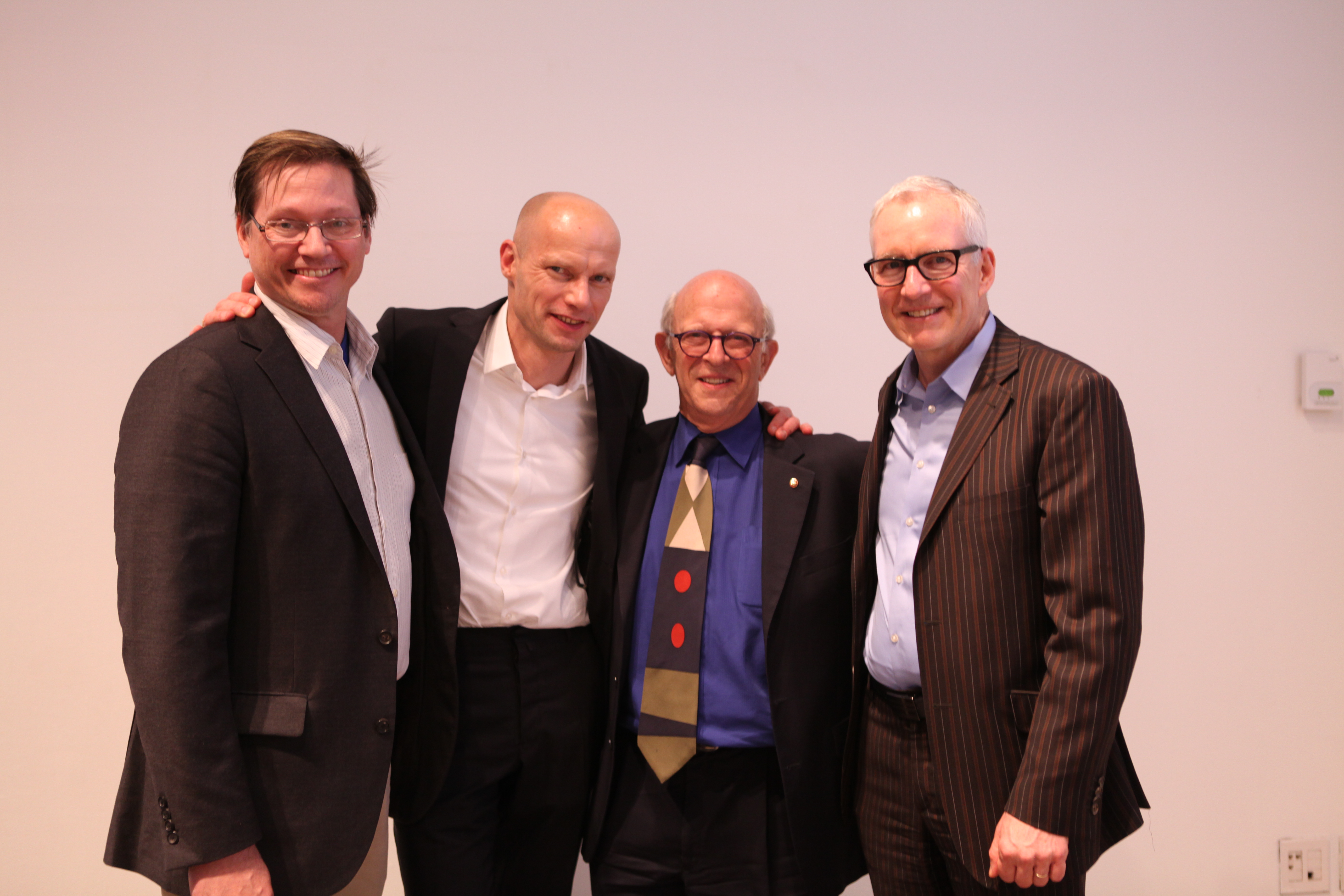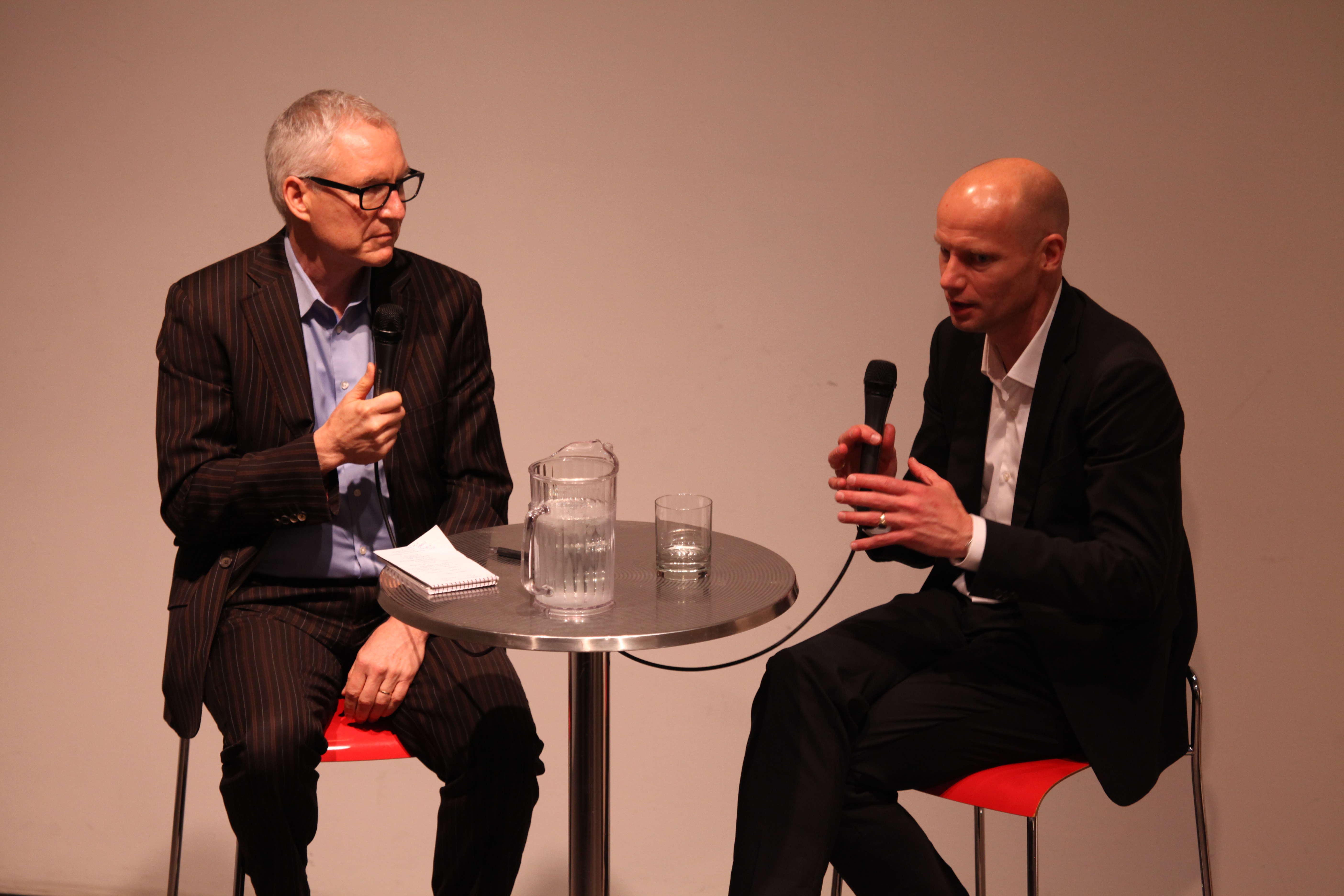by: Graham Higgins LEED AP
On Earth Day, 4.22.14, AIANY and the AIANY Design for Risk and Reconstruction Committee (DfRR) hosted Henk Ovink, former Acting Director-General of Spatial Planning and Water Affairs for the Netherlands Ministry of Infrastructure and the Environment and current senior advisor to U.S. Housing and Urban Design Secretary Shaun Donovan, Hon. AIANY. In the aftermath of Superstorm Sandy, Ovink emerged as a central figure in shaping the future of the entire region affected by the storm by leading the HUD Hurricane Sandy Rebuilding Taskforce. As a nation, the Netherlands has formally addressed issues of flood prevention and protection for more than 900 years. Through Water Boards, a system of regional water authorities introduced in the 13th century, formerly separated communities have worked together to address regionalized environmental issues associated with water management. Today, nearly 300 Water Boards actively continue their ancestors’ work by crafting collaborative strategies for water management and extreme weather adaptation throughout the Netherlands. While “resilient” design strategies have become increasingly significant in the wake of Sandy, Ovink has leveraged his experience to introduce a new era of holistic and collaborative responses to extreme water events intensified by climate change.
Beginning with AIANY 2014 President and DfRR Co-chair Lance Jay Brown, FAIA, and his poignant assertion that “nature does not respect political boundaries,” the Earth Day evening highlighted the importance of addressing the varied impacts of climate change. In introducing Ovink, DfRR Co-chair Illya Azaroff, AIA, emphasized the significance of acting upon the inevitable water-based issues that both the developing and developed worlds will continue to face. As Azaroff noted, according to the End Water Poverty (EWP) initiative, every $1 invested in water and sanitation developments yields on average of $8 in increased productivity. While the evening focused on the areas affected by Superstorm Sandy, Brown and Azaroff stressed the importance of a holistic approach to addressing climate change and its human impacts. It is clear that while some regions will face drought, others, such as New York City, will face inundation. Ultimately, Ovink and moderator James S. Russell, FAIA, revealed that despite Sandy’s unprecedented devastation, the storm has also served to bring to the fore economic, social, and ecological vulnerabilities, creating opportunities to improve the future through effective design.
As the principal organizer of the Rebuild by Design competition, Ovink helped introduce a novel approach to disaster relief on behalf of the federal government. After Sandy, federal relief funding surged into affected regions with an almost hurricane-like intensity. Nearly $60 billion was set aside by Congress, and $15 billion for HUD distribution. Initially the federal government introduced a one-day, multidisciplinary workshop to identify the issues and opportunities within the affected area, and devise potential mitigation and adaptation strategies. Ultimately, through Ovink’s leadership, the workshop evolved into Rebuild by Design, a comprehensive regional assessment and design competition featuring 148 teams of professionals from a variety of disciplines, including architecture, urban design, engineering, ecology, and communications.
Each of the competition’s 10 finalists, announced in June 2013, developed a strategy to design with rather than for each of their project areas. While each project incorporated physical resiliency, in this instance the ability to withstand water-related extreme weather events, such as sea-level rise and hurricane force winds, designing for social resiliency is what distinguishes the Rebuild by Design effort. The competition’s teams focused extensively on consulting communities first before any formal design work. As Russell wrote in Architectural Record, posted shortly before the event: “Instead of visionary ideas or grand plans, the teams offered suites of tactics that create flood protection, urban amenity, and economic development benefits.” Throughout his presentation Ovink focused on the importance of government working to foster collaborative reconstruction efforts rather than dictating and imposing predetermined relief strategies. As a result, projects such as the BIG/Bjrke Ingels Group Team employed green space to address open space deficiencies and provide a system of public amenities, while also serving as a storm water capture and water filtration strategy. The Rebuild by Design competition innovatively strives to re-conceptualize governmental relief efforts through intelligent community-based collaborative design.
In the past two weeks, New York City has reestablished its commitment to resilient design and community development. The 2014 New York City Hazard Mitigation Plan and 2014 PlaNYC Progress Report reaffirm New York and its new mayor’s focus on resilient design strategies, re-substantiating the city’s central significance in combating climate change and its ramifications. Simply put, while our nation struggles to accept the realities of climate change and the complex array of challenges it poses, we must look to other nations and philosophies for support in crafting dynamic and effective solutions. Ovink’s work and competitions such as Rebuild by Design optimistically greet the challenges of climate change and leverage them to strengthen and improve affected regions. The impacts of climate change are severe and present arguably the greatest challenge humanity has faced; however, when linked with effective design solutions they also provide opportunities for improvement and empowerment. The stage is now set for New York City to both lead a collaborative regional effort for Sandy reconstruction and retain its place as a world leader in resilient design.
Graham is the Director of Project Resiliency for the New York City-based Development Management firm Cirgenski + Capalino and covers a variety of sustainability and resiliency issues concerning the built environment.
Event: Earth Day 2014: An Evening with Henk Ovink
Location: Center for Architecture, 04.22.14
Speakers: Henk Ovink, Principal, Rebuild by Design, and Senior Advisor to Secretary Shaun Donovan, Hon. AIANY, HUD Hurricane Sandy Rebuilding Task Force; James S. Russell, FAIA, author, Well Being and Wealth in an Era of Climate Change; Lance Jay Brown, FAIA, AIANY 2014 President, and Founding Co-chair, AIANY Design for Risk and Reconstruction Committee; Illya Azaroff, AIA, Founding Co-chair, AIANY Design for Risk and Reconstruction Committee
Organizers: AIANY Design for Risk and Reconstruction Committee












